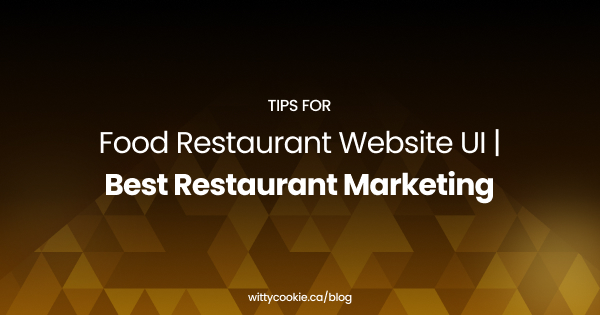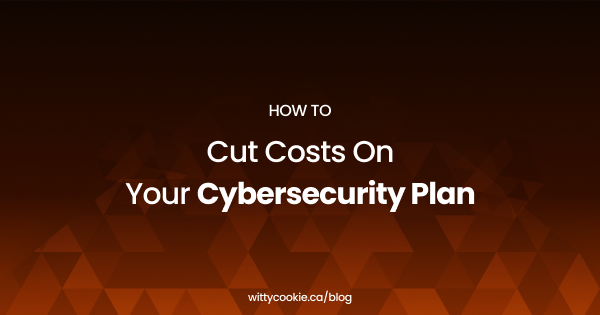Tips for Food Restaurant Website UI | Best Restaurant Marketing
Websites for Best Restaurant Marketing
While the UI rules and best practices for good websites are universal, restaurant websites are different from other store sites as they have some extra factors and features that need additional attention. The best restaurant marketing requires the inclusion of cool restaurant websites in their marketing strategy. The best food restaurant website should integrate the features and benefits from restaurant menu websites, restaurant booking sites, and restaurant industry blogs all into their own website for their own restaurant. In this blog, we will discuss some tips and tricks for how to design the best restaurant website for you! To make the best website for your restaurant, here are some things to keep in mind!
Food Restaurant Website Design Tips
Homepage
Your website is only as good as your homepage. Referencing the quote “to judge a book by its cover”, this also applies to websites as the homepage of your site directly affects the way in which your business is perceived. Remember, first impressions matter. Here are our tips for the best homepage design!
1. Photos
Using high quality photos on your website goes a long way. If you don’t already have professional photos for your business, you can find a friend with a nice camera and ask them to help you take your needed photos!
2. Above The Fold
Make sure the most important information shows up in the top half of the screen upon loading your website. Engage people before they even start scrolling!
3. Navigation Menu
Getting around your site should be intuitive and easy for your user to use. On top of generic titles, restaurants should also take note to include industry specific titles. Below is a list of links and titles options you can include.
- Menu
- About Us
- Order Online
- Reservations
- Gallery
- Contact Us
4. Location
Make the address of your restaurant clear on the homepage by providing it on the footer of all pages on your website. Then, link the address to the appropriate Google Maps link to make the process of finding your restaurant easier, faster, and more efficient and convenient for your prospective customers. In addition, you can also highlight any special instructions that you think would add value, such as where to park, if there is valet parking, etc.
Ask for Emails
Customer emails are a key resource for a restaurant owner and all business owners alike, and well designed store sites will definitely help you obtain more of this key resource.. Having a good list of customer email addresses provides you with a direct link to your customers as it is a personal communication channel that goes directly from you to the customer. To get the email of your customers from your website, create a field for customers to “stay in touch” by entering their contact information on your website. By making use of email marketing, you can retain customer leads, promote your restaurant, and consequently drive more transactions in your restaurant for increased revenues and profits. For the best restaurant marketing, make use of email marketing!
Hours
State your hours clearly. If you’re open every day for all meal times, this is less important. But, if you’re closed every Wednesday, avoid an angry customer and tell them before they make the trip. Update for holidays too!
Reservations
It is likely that prospective customers who search for your restaurant website online would also want to know about your reservation policy. Give them answers to their question – and fast. Restaurant booking sites and website pages should make the reservation process quick, easy, and effortless for users to maximize conversion rates. Some things to think about include:
- Reserving options: For restaurants who choose to take reservations, it is recommended to provide customers with the ability to make reservations through different mediums and not just through phone calls. Other ways to accept reservations can include accepting emailed reservation requests, as well as having a website feature for making reservations online.
- No reservations: If you decide to not take reservations, that’s fine too! But just ensure to make this explicitly clear.
Menu
Despite being presented online, a digital menu should still focus on providing good content, presentation flow, language, and design in their menus. You can present your menu on your website by either creating separate menu pages and subpages on your site, or allowing users to download a PDF version of your menu from your website. Using restaurant menu websites allow customers to better understand your services and available products.
HTML Menus
For menus, it is advised to make HTML menus as HTML menus are searchable. This means that Google recognizes the words in your content and pushes your website towards the top of the organic search results on the SERP. In addition to this, HTML menus are also mobile friendly.
Online Ordering
Allowing users to order online provides users with a dynamic marketplace from which customers can engage in and purchase from your restaurant. Instead of using a static menu, having a dynamic ordering system allows users to interact with your restaurant and its food services and products, consequently helping them stay engaged during their purchase journey and process which in turn can increase the rate of possible conversions.
Promotions
Websites are the perfect platform to use to keep your customers updated about news, promotions, and special offers that your restaurant has and is offering. Make sure to keep your users up-to-date about your restaurant offers! Some methods to do this include using a calendar feature on your website, having a “News” section on your website, or even creating a pop-up with your announcement that shows up upon entering your website.
Restaurant Story
Your website should be one giant storybook that helps your users learn about your restaurant. Think about what brand image you are trying to convey. What do you want your users to know about your restaurant? Below are some things you might want to include in your website.
1. Restaurant Chef and History
People love to know about who is preparing their meal. Some things you can add to accentuate the story-telling aspect of your website include:
- The history and conception story of your restaurant
- The culinary journey and background of your head chef
- The idea of where the name of your restaurant came from
- Anything memorable and authentic to your restaurant!
2. Farmers/Ingredients
If your website focuses on using seasonal, local, or organic ingredients, you can promote your restaurant by providing this information on your website! One way to do this is to provide a brief description about the ingredient philosophy of your restaurant and to mention and possibly link the source of your ingredients, whether they are from a farmer, purveyor, etc.
In addition to letting your customers know about where you get your ingredients, you can also think about letting your users know about the type of equipment you use in the kitchen. Gain their interest by providing them with a more vivid imagery of your restaurant, not just in the front-end restaurant but also in the back-end kitchen!
Restaurant Social Media
For the best restaurant marketing strategy, it is highly advisable for any business owner to stay in touch with their customers through social media channels and platforms. Ideas for content for restaurant social media posts include posting about special events, promotions, customer reviews and community photos, pictures of the restaurant interior, etc. On top of using social media platforms such as Instagram, Twitter, and Facebook, other general promotional channels you can utilize include:
1. Restaurant Blog
Start a restaurant blog on your website to drive the SEO and traffic on your website by using keywords in your content!
2. Press Releases
Create a page on your website to include and feature all your press releases. Include links to all online articles, logos of the publication house, and pull out complimentary quotes and content from the article to promote your restaurant.
Restaurant Website Examples
To help with inspiration to design cool restaurant websites, here are some examples of great food restaurant websites to check out!
- Simmons Bar
- The Original
- The Tailor’s Son
- Disco Cheetah
- Federalist Pig
- Fat Choy
- King Restaurant
- Bandits
Want to create the best restaurant website for you? Check out WittyCookie’s award-winning web design services!
Conclusion
Restaurant websites are branded, creative, but also simple and clean. They should be able to effectively communicate all the necessary and relevant information the user is looking for in just a few pages. Instead of focusing on the number of clicks and pages viewed, they instead focus on capturing, enticing, and drawing the attention of customers to maximize website traffic and converting users into customers either through online orders or restaurant reservations. For the best restaurant marketing, it is essential to have a well designed food restaurant website.



